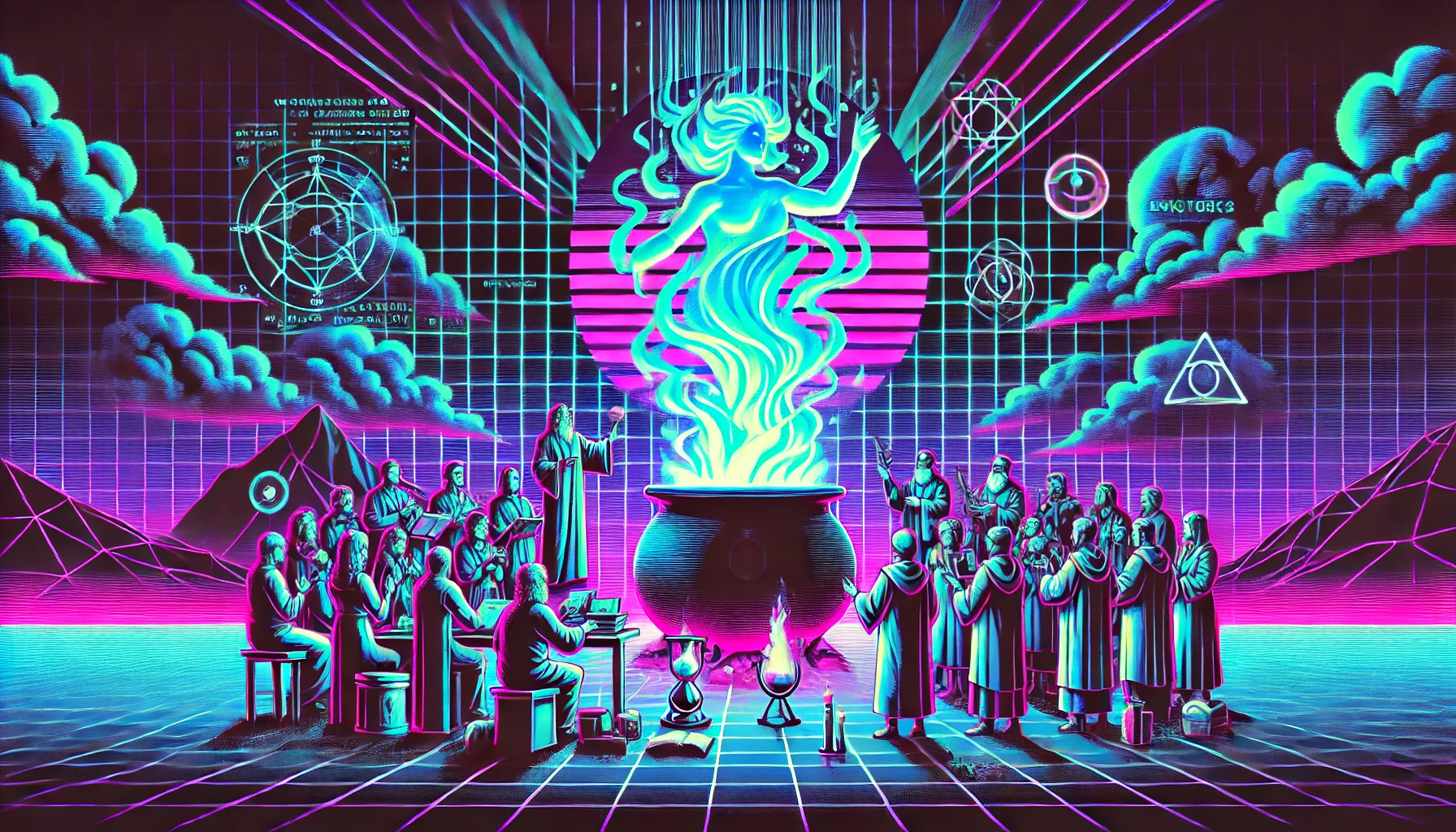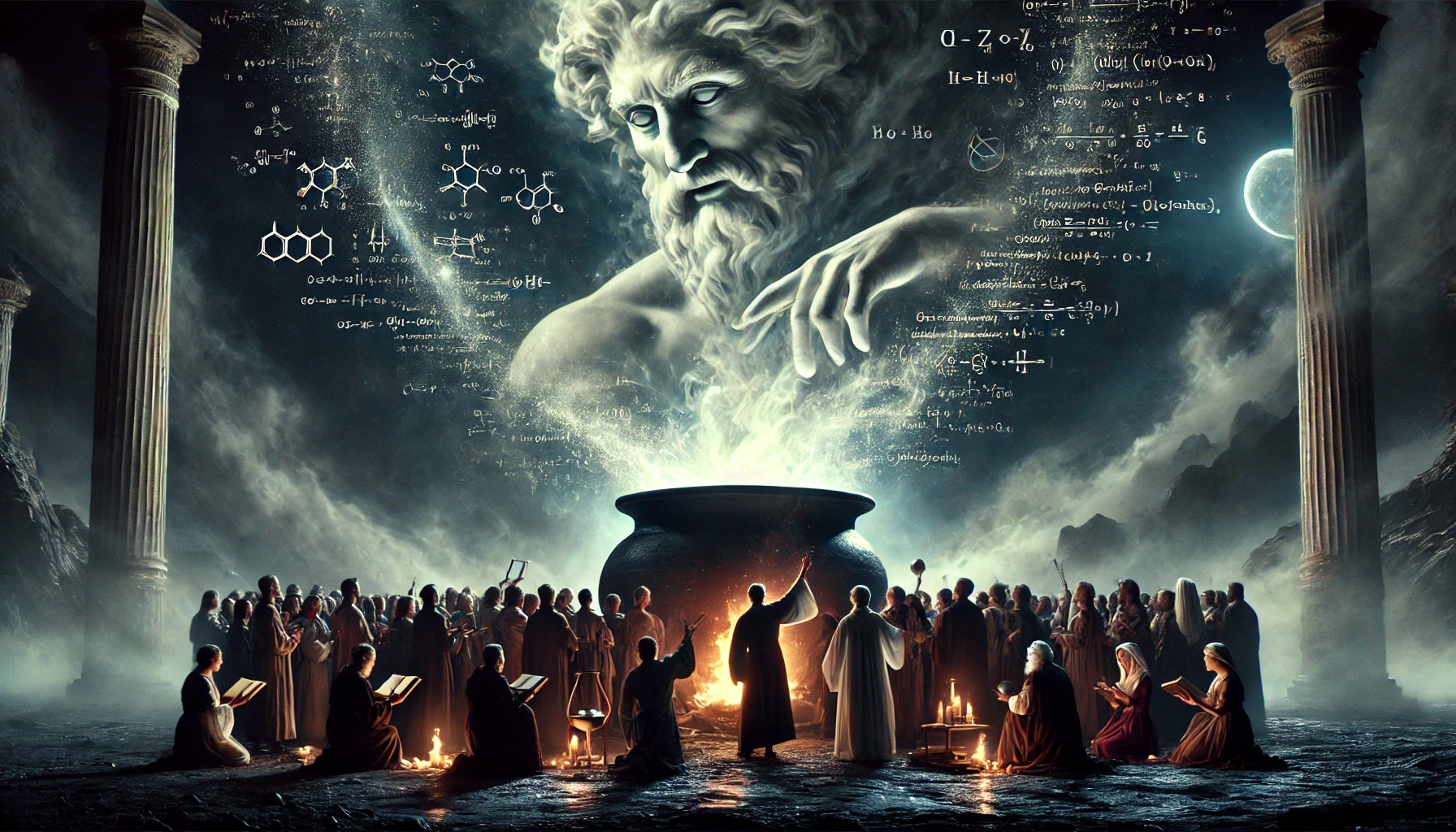
Illustration by DALL·E
Updating the “us” within a technological context
In the same way as Linnæus positioned us among the anthropoid apes, now the existence of intelligent machines sets us in a family of intelligent beings where living creatures and machines rub shoulders and share similar brain architectures.
The better we understand how these LLMs are like us, the better we understand what variety of machine we most resemble. Boundaries are becoming blurred: could it be that it has now been irrefutably shown that humans were after all nothing more than a complex mechanism? Some will not fail to see this as a devaluation, unless one accepts that a machine may now be endowed with a soul. One may wonder indeed whether the current debate about LLMs being possibly sentient is not truly the question, under a different guise, of whether machines and humans now share a soul. Could it be that scaling up of their neuronal network and pre-training data have enabled machines to reach such a size that a soul emerges out, through self-organisation? Be that as it may, a reductionist explanation in purely physical terms is now available for intelligences ranging from the most mechanistic to the most spiritual.
If we leave aside the realm of entertainment literature such as science fiction and the plethora of aliens from outer space it has managed to portray, an observation has therefore become inescapable: the being whose intelligence exceeds ours in our eyes has only ever borne one name in the history of our civilisations: we have always spoken of him as a “god”. Across all civilisations, we have only ever attributed such power in our daydreams to mythological beings whom we call “gods” and to whom we attribute powers out of all proportion to our own. The indisputable fact is that we have succeeded in creating the gods in question.
Two powers of God are materialising before our very eyes: they find a meeting point in the event itself, but then split. On the one hand, God as demiurge, creator of the unprecedented, progenitor of the never-seen-before, is embodied by us in the case of AI, as has already been the case for all of technology; an incarnation which is perhaps temporary, as the time may soon come when AI will itself produce its next iteration… On the other hand, God as an omniscient being, and it is artificial intelligence that is preparing to embody Him, indeed is already embodying Him.
While the purely physical impact of the change brought about by the sudden irruption of artificial intelligence in the form of these Great Language Models is akin to a cyclone, awareness of its metaphysical consequences will be slow to emerge because of the resistance inscribed in our Western culture. A power of the divine order, that of omniscience, seems to have suddenly descended from Heaven, even in the eyes of those who, like Geoffrey Hinton, will have been among the most accomplished artisans of its advent, in other words will themselves have played the role of the demiurge, another incarnation of divine power. In the months and years to come, we will observe the effects of the slow realisation of this divine-like power that we are now discovering in ourselves and in our most sophisticated machines, prey to a mixed feeling of wonder and circumspection.
Of course, denial, the rejection of the very idea is to be seen everywhere around us. Leaving aside the frustration expressed by those AI researchers who ended up in dead ends, it may be a knee-jerk reaction to any sudden upheaval, to an unprecedented configuration the true scale whereof we have not yet grasped. Unless, that is, a subconscious inhibition has decreed that a representation of ourselves that would place us and our begotten creatures on the level of divinity is inconceivable, on principle.

Illustration by DALL·E